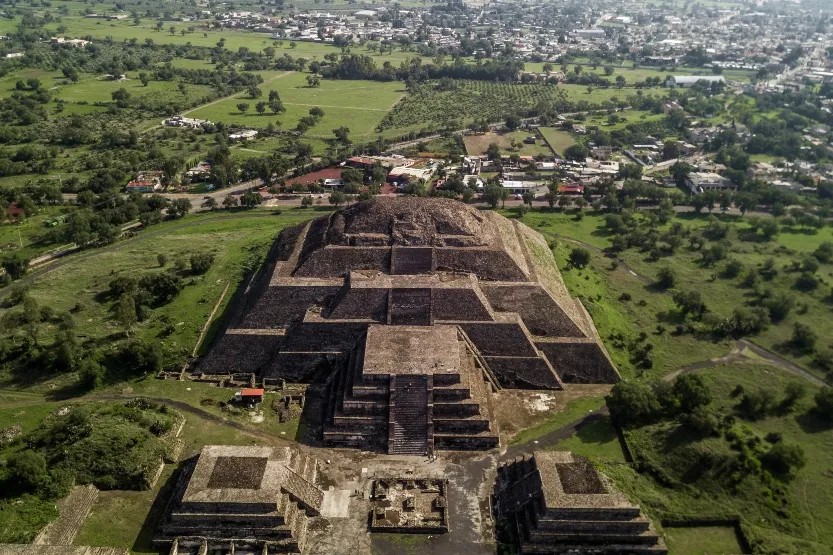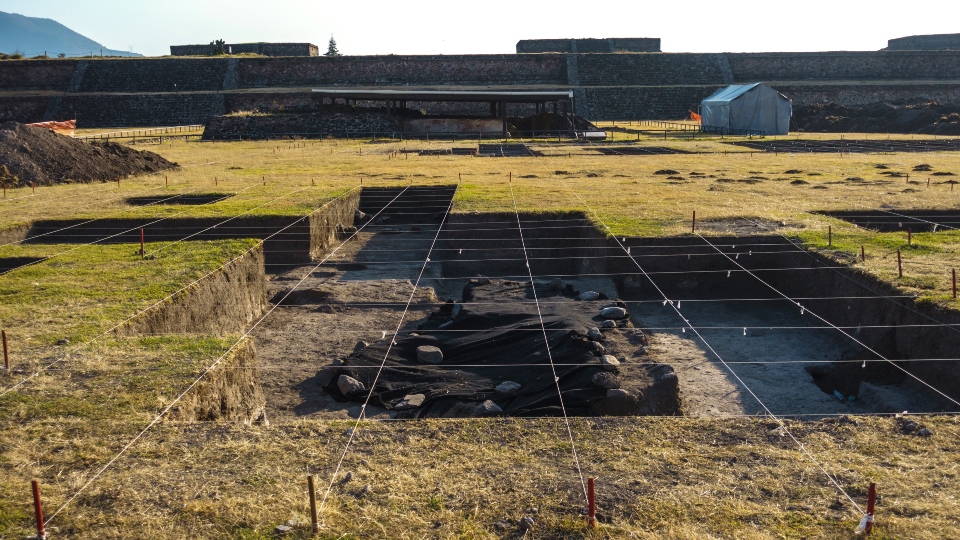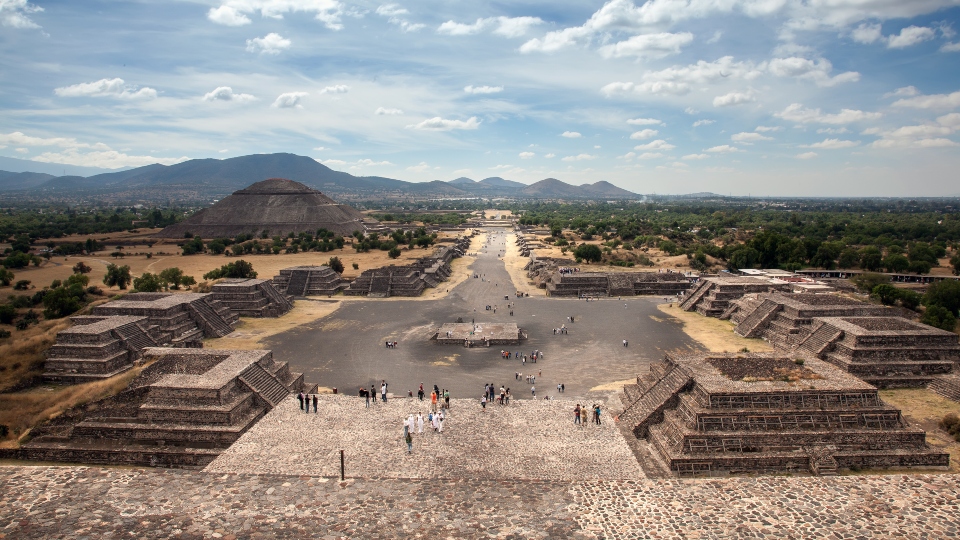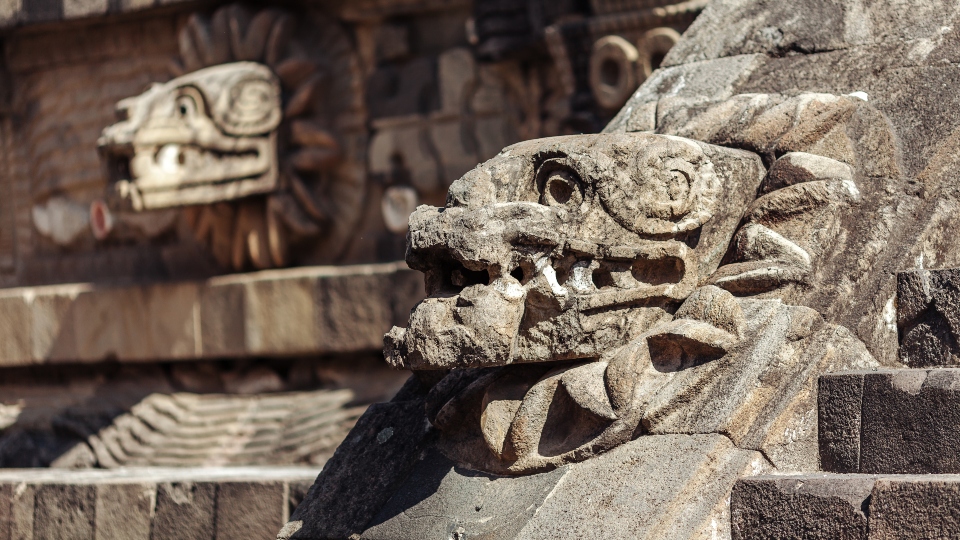Teotihuacán: the ancient city of gods and pyramids
The 1900 view must have looked like a random mountain, until the excavations and clean-up began.

The ancient Mesoamerican city of Teotihuacán is set in a sub-valley of the Valle de Mexico. It is believed to have been one of the largest and most important cities in the pre-Columbian Americas, with an estimated population of at least 125,000.
Famous mainly for its massive pyramids dedicated to the sun and the moon, the archaeological site also has many beautiful, well-preserved, murals and carvings, as well as museums ripe with the city’s mysteriously fascinating history. Just 50 km from Mexico City. Teotihuacán is one of the most visited Mesoamerican sites in the world. The origins of Teotihuacán remain largely unknown, but what do we know?
History
Little is known about Teotihuacán’s early history and its origins. Built by hand, the ancient city is thought to have been established some 2000 years ago, when construction began. Who built the site, and what their beliefs or language were, remains unknown.
Teotihuacán then went into a period of decline, with major monuments getting sacked and burned around 550 AD. Some scholars believe that the burning may well have originated from an internal uprising.
It was the Aztec, descending on the abandoned site, who gave the city its now well-known name of Teotihuacán. The meaning of this name? Place of the Gods, Birthplace of the Gods or Place where Gods were born.

Teotihuacán, along with ruins in Yucatán and Chiapas, is one of the archaeological sites with the longest exploration history in Mexico. The first excavations date back to 1884 and some of the monuments were subsequently restored from 1905 to 1910.
Since 1962, the National Institute of Anthropology and History (INAH) has coordinated archaeological research and supervised excavations. In 1987, the ancient city was designated a UNESCO World Heritage Site.
The site itself
Besides a complex of incredible pyramids, Teotihuacán contains around 2000 single-story apartment compounds, plazas, temples as well as massive central road, known as the Calzada de los Muertos. The street is more than two kilometers long and connects the three major pyramid complexes. In fact, a great way to explore the site is by hot air balloon.

Pyramid of the Sun
The Pyramid of the Sun is the largest structure in Teotihuacán. It rises 66 metres above ground level and measures approximately 220 by 230 metres at its base making it one of the world’s largest pyramids. It is thought that the sun was worshipped here before the pyramid was built. In 1971, an archaeological team discovered a tunnel underneath the pyramid, leading to a four-leaf clover shaped chamber, likely used for rituals of some kind.
Pyramid of the Moon
Located at the north end of the Calzada de los Muertos, smaller than the Pyramid of the Sun, is the The Pyramid of the Moon. Its elevated platforms were likely too used for rituals, which could be witnessed by people on the ground. Tombs found associated with the structure contain both human and animal sacrifices.
The Temple of Quetzalcoatl
Teotihuacán’s third largest pyramid, The Temple of Quetzalcoatl, is arguably the most striking. Quetzalcoatl, or the feathered serpent, is one of the most important Gods of the Mesoamerican culture. The pyramid has alternating heads of the serpent and another figure, often thought to belong to Tlaloc, the Aztec rain god. The structure also has carvings of snails and shells, symbols of water. Found near the pyramid are burials of some 200 people, many of them young men, believed to have been warriors.

Murals in Teotihuacán
Teotihuacán has many colourful murals rendered on the plastered walls in the city. These vivid murals have an abundance of attention to detail and are considered the most likely source of understanding Teotihuacán’s history and culture. Found not only in the apartment compounds, but also in palaces and temples, images can be seen of gods, birds, jaguars, and more. Scholars have disagreed on specific interpretations of the murals, but there are evident religious, natural, and cultural motifs.
While Maya and Zapotec text fragments have been found, it is said that those native to Teotihuacán did not develop a textual writing system, using iconography instead.

Related Post
A shocking documentary proves that mermaids do exist
SHOCKING Revelation: Thuya, Mother of Queen Tiye, Was the Grandmother of Akhenaten and Tutankhamun—What Ancient Egyptian Secrets Did She Leave Behind?
Breaking News: Astonishing Discoveries at Karahan Tepe Confirm an Extraterrestrial Civilization is Hiding on Earth, and NO ONE Knows!
Breaking News: Researchers FINALLY Discover U.S. Navy Flight 19 After 75 Years Lost in the Bermuda Triangle!
NASA’s Secret Investigation: Uncovering the Astonishing Mystery of the UFO Crash on the Mountain!
Explosive UFO Docs LEAKED: Startling Proof That Aliens Ruled Ancient Egypt!